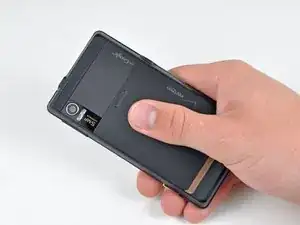
Battery
These are some common tools used to work on this device. You might not need every tool for every procedure.
Released in October of 2009, the Droid was released with the intent of being a strong competitor in the iPhone dominated smart-phone market. The Droid runs the Android operating system designed by Google, and comes standard with free turn-by-turn Google Maps Navigation. In addition to having an extensive library of available applications, the software is completely open-source, allowing the user to customize the phone any way they see fit.
The Motorola Droid is easily identifiable by its slide-out keyboard with a large gold D-pad. Its successor, the Droid 2, looks similar to the original model, but does not have a D-pad on the redesigned keyboard.
Track down problems encountered with your Droid on our Droid Troubleshooting Page.